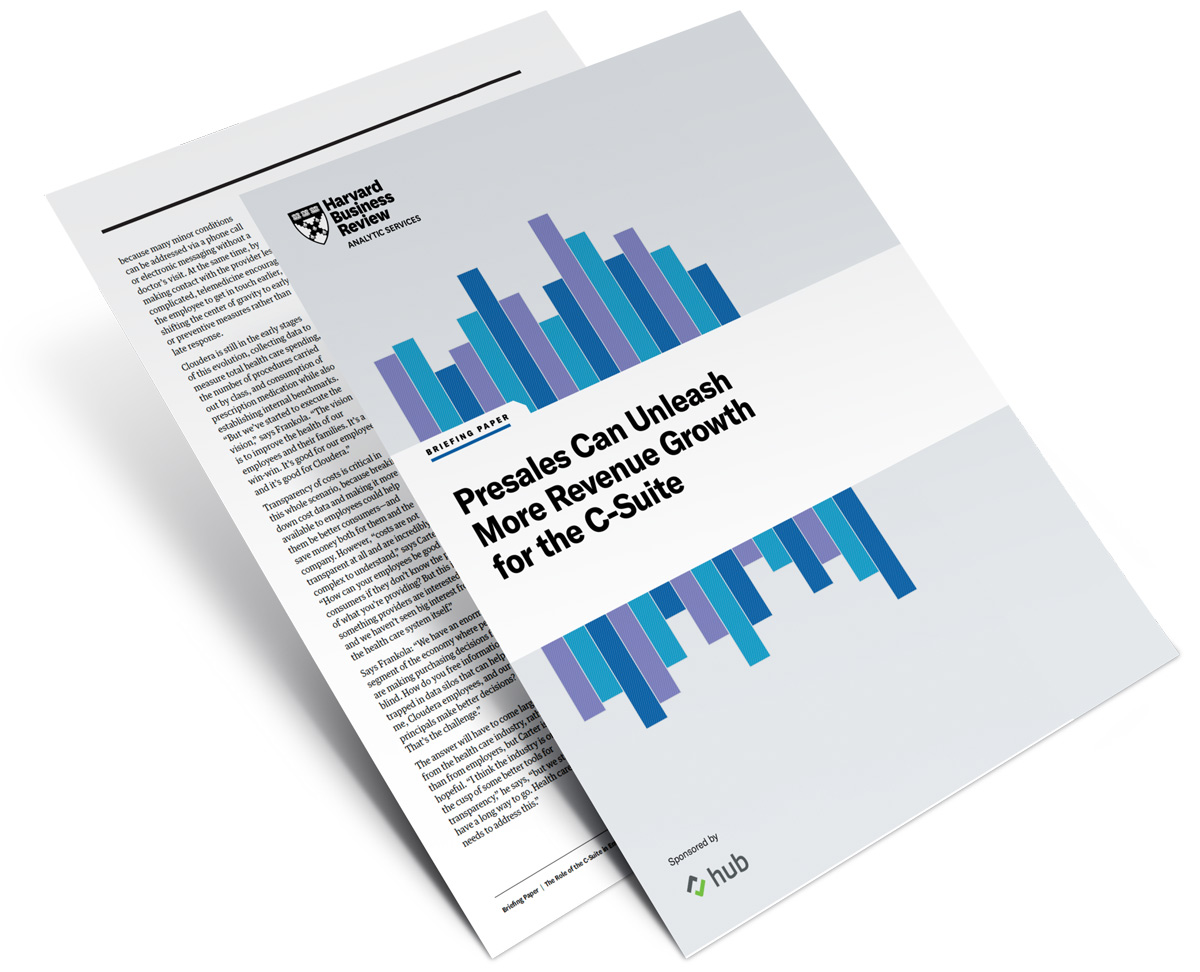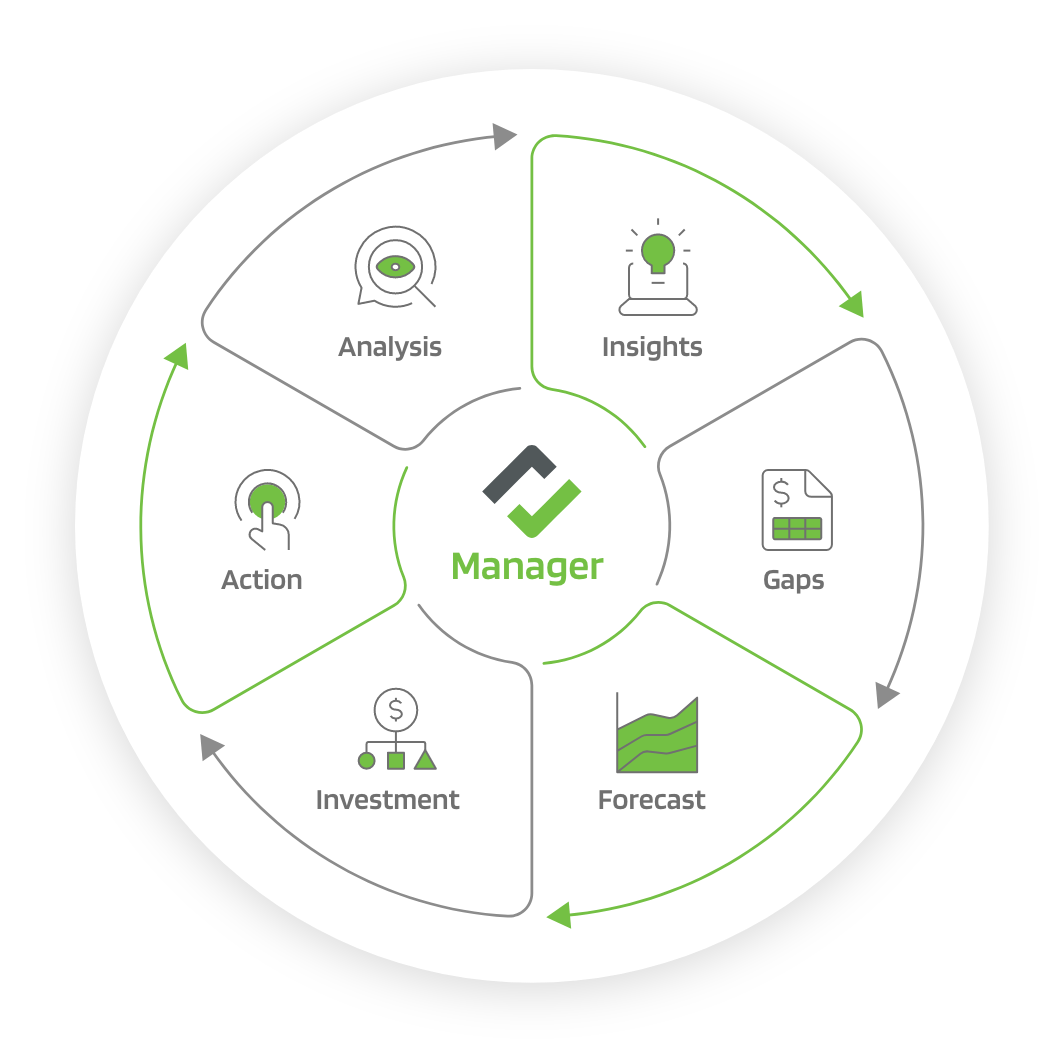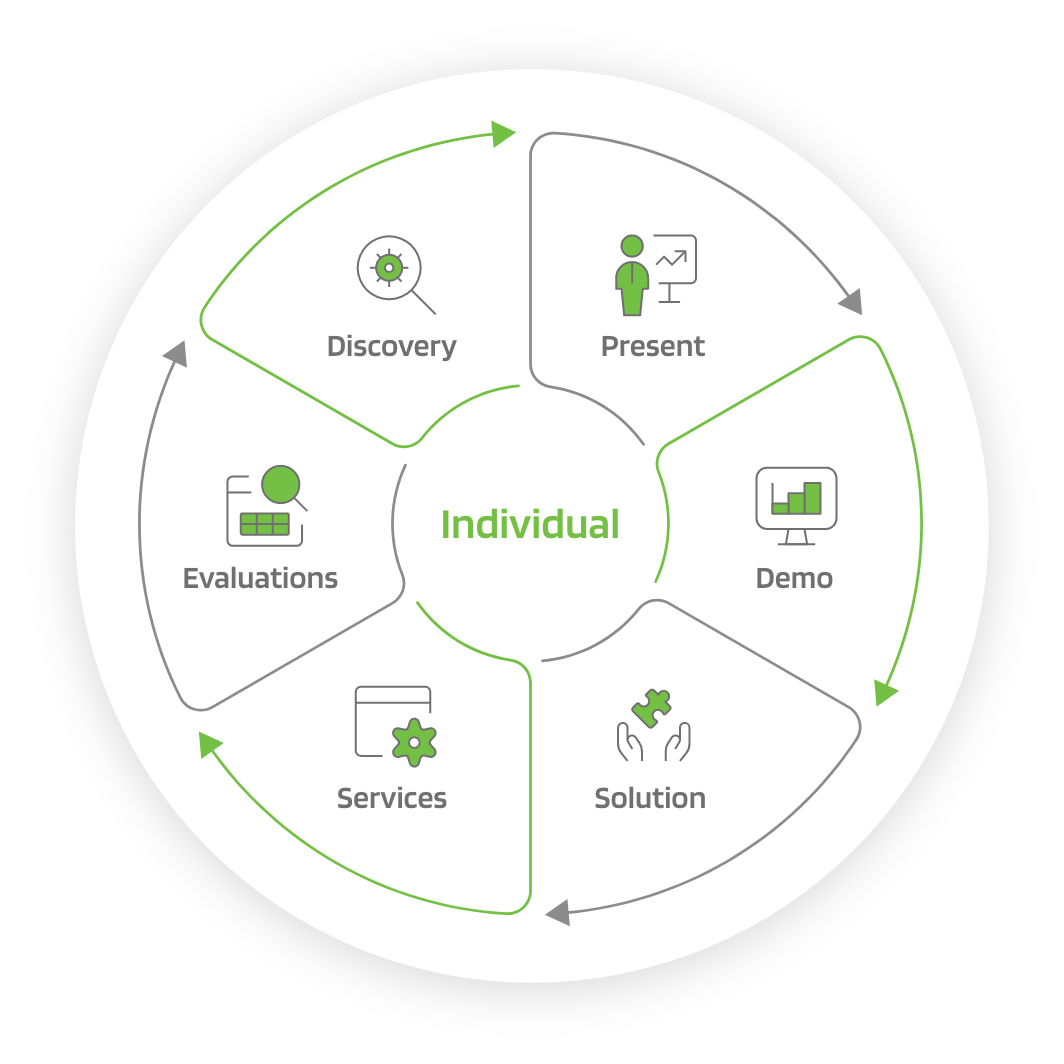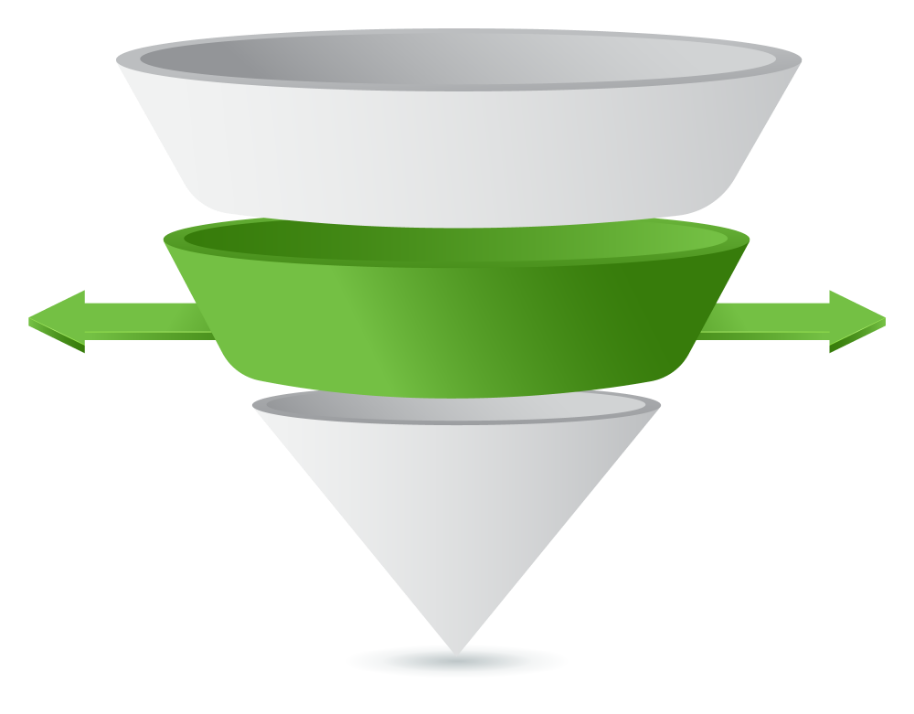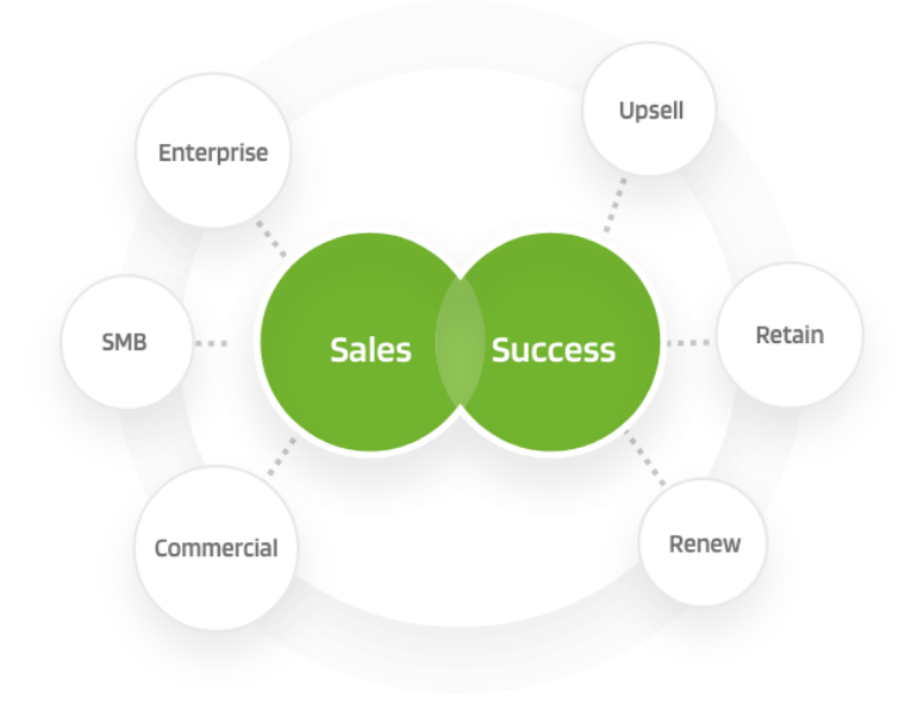
Technical Sales by Hub
Technical Sales May Be Your Secret Weapon To Gain Sales Efficiency During A Recession

This blog aims to illustrate to the C-Suite and VP leaders that paying more attention to technical sales may very well drive significant gains in your sales efficiency.
My most recent post, “Your Technical Sales Are The Unsung Heroes Of Your Business,” struck a nerve with a lot of readers. They DM’d me and struck up lively conversations about what technical sales can do to make the sale process more efficient within their organizations. This is particularly important now as businesses deal with the impact of the coronavirus pandemic and ensuing global economic crisis. Companies of all sizes are looking for ways to manage cash and optimize their operations.
One problem that the C-suite and VP-level leaders are trying to solve is how to increase sales efficiency from their sales and marketing (S&M) funnel. Historically, companies have paid close attention to funnel stages touched by marketing, sales development representatives (SDRs), sales representatives / account executives (AEs), and customer success (CS), often commonly referred to as customer experience (CX). However, I observed far fewer conversations about optimizing the stages that technical sales touches. This is a missed opportunity. Improving technical sales can yield greater sales efficiency, which can, in turn, improve profit margin and extend the company’s cash position.
A very successful Chief Revenue Office (CRO), who grew companies from $1M to $1B+ ARR, told me he didn’t really pay a lot of attention to top-of-the-funnel metrics like marketing or sales qualified leads (MQLs and SQLs). Instead, his biggest indicator to winning business was how much was in the evaluation stage and what could be done to move those evals to wins. “If we get the technical win, it is the best leading indicator to meeting or exceeding the quota,” he said. He wasn’t diminishing the value of all the other members that drive marketing and sales, but he wanted to highlight the importance that technical sales has in driving the business.
So how should a company think of their sales efficiency metric and make it actionable to the S&M funnel and business? To answer this, let’s first look at the definition of sales efficiency.
Sales Efficiency
Tomasz Tunguz, prominent investor from Redpoint Ventures, published a blog post titled “Sales Efficiency Benchmarks for SaaS Startups” that defines sales efficiency and provides metrics of publicly traded SaaS companies. The sales efficiency definition is simply incremental revenue returned by sales and marketing investments, or as Chief Financial Officers (CFOs) would say, expenses.

Tomasz gives this example: “If a startup invests $500k in marketing and sales this quarter and generates $1M in incremental revenue, net of the cost to provide the service, for the next 12 months, the sales efficiency would be 2.” Tomasz goes on to provide metrics on the average SaaS company sales efficiency, as depicted below, that range from 5.0+, which is exceptional, to below 0, which is bad. The higher the sales efficiency score, the better it is for your company.

So what is your company’s sales efficiency score and how does it compare to others in your industry? And how can technical sales play a role in improving it? Let’s look at ways to boost that metric.
Improving Sales Efficiency
In order to improve your company’s sales efficiency, I suggest that your C-Suite and VP-Level leaders look at the S&M funnel holistically. They should bring all department leaders to the table, including technical sales, and apply a thoughtful process to:
1. Identify if current S&M stages still apply given current market conditions and the company’s lifecycle (example of common stages are awareness, qualify, present, demo, evaluate, purchase, implement and upsell)
2. Do their best to baseline current efficiency scores of all pre- and post-sales stages
3. Assess investments in people, processes and tools that are working and not working at each stage
4. Identify a course of action(s) that will provide the greatest return on investment (ROI) and deliver the most leverage to improve sales efficiency
My observations tell me that when companies are tasked to improve sales efficiency, not all stages get the same level of attention. Below is an example for illustration purposes.

Unfortunately, not all companies give enough thought to optimize the stages that technical sales touches. This applies specifically to demo and evaluation, which have the greatest influence over proving product value and winning businesses.
Therefore, consider these questions:
- How much investment has your company made to optimize people, processes and tools to streamline the stages that technical sales influences?
- How do those investments compare to other investments made with other departments that touch different stages of your S&M funnel?
- What would happen to your sales efficiency if your company paid closer attention to technical sales?
Let’s walk through a fictional scenario, where a company historically overlooked making any investments in technical sales. Then let’s see what could happen to the company’s sales efficiency report card once it applied more focus on technical sales.
Sales Efficiency Report Card
Let’s say company Dilbert Inc. has a sales efficiency of 0.8, a range where most SaaS companies operate, according to Tomasz. Over the years, Dilbert Inc. has invested in marketing, sales and customer experience. They provide ample budget for training and tooling. But once again, Dilbert Inc. is chartered to optimize their whole S&M funnel, this time including technical sales. They make those additional investments and discover the following results:

Per the analysis, optimizing technical sales increased the sales efficiency by 0.8, essentially doubling the performance, for a new sales efficiency score of 1.6. Investing more in technical sales yielded the greatest increase in sales efficiency because Dilbert Inc. historically overlooked that function. Dilbert Inc. relied on technical sales to hack their own tools, define their own processes on the fly and fend for their own internal training, which led to suboptimal technical sales efficiency.
Now I admit that this particular example may be a little extreme and may not apply to your business, as your company may have invested in technical sales. However, from what I have heard and seen in the industry, that is usually not the case.
You know your business better than anyone else. So all I suggest is that you run an analysis like the example above to create your own sales efficiency report card and determine your best course of action(s).
Summary
Building a great business is a team sport. To quote Peter Drucker, “There is no I in team.” And this ethos also applies to sales and marketing departments. During this global financial crisis, it is more important than ever to operate like a team, be objective and identify areas where one can gain the greatest sales efficiency leverage. I believe that there is much to be gained by paying attention to how technical sales can impact sales efficiency. If nothing else, I hope this post prompts conversations that go beyond the traditional areas of marketing and sales and injects into the discussion how optimizing the technical sales discipline can help your company during these challenging economic times.
Here are ten questions to determine how technical sales may help you improve your sales efficiency:
1. What is your split between landing new business versus expanding the business with existing accounts?
2. Throughout the marketing and sales funnel, where has your company made the greatest number of investments in training your people, improving processes and purchasing tools?
3. How have those investments improved your sales efficiency?
4. Has your company made insufficient investments in technical sales?
5. How many tools does your technical sales team “hack” together to do their job more effectively?
6. How distracting are those efforts? Can your technical sales get more time selling value if they did not have to hack their own tools?
6. Should your company look at commercial tools for technical sales so they can focus on showing value and technical selling?
7. Has your company ever formally trained your technical sales staff in soft and hard skills?
8. If you trained your technical sales staff, could you increase your conversion rates and move to the next stage?
9. Do you have clear processes for your technical sales teams to follow? If so, how can those processes be improved?
10. Does your technical sales leadership have a seat at the C-Suite and VP level to advocate for your team’s needs?
Freddy Mangum has held various C-level roles in high-growth companies and is a Venture Consultant with ForgePoint Capital, a $750M early stage venture fund. Freddy currently advises C-suite staff on go-to-market and mentors founders through programs like the Stanford Incubator (StartX).
You can read more of Freddy Mangum’s articles on LinkedIn here.
